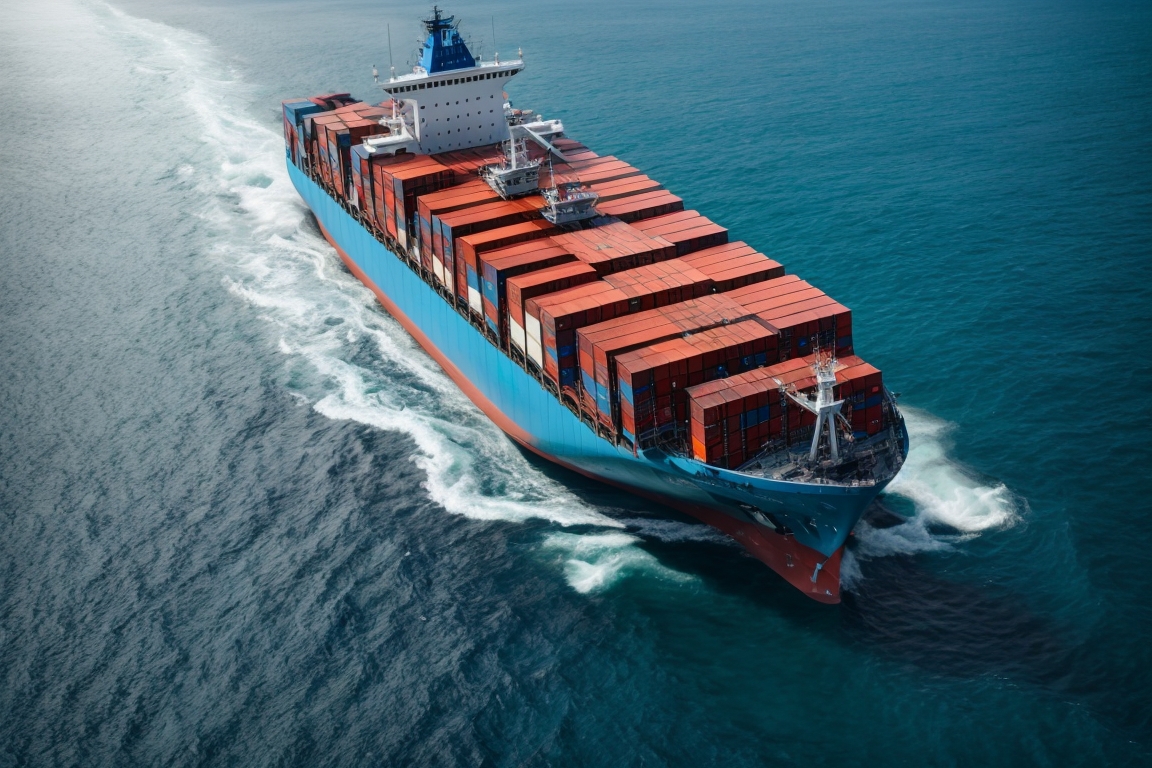
NavClub
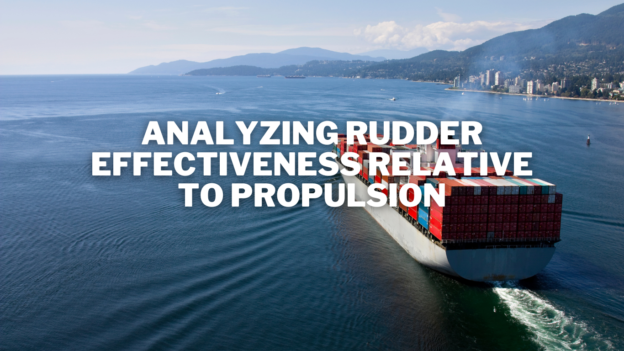
Analyzing Rudder Effectiveness Relative to Propulsion
June 24, 2024 in Life at Sea
Understanding the interaction between rudders and propulsion systems is crucial for enhancing the maneuverability and safety of marine vessels. The rudder, a primary steering device, works intimately with the propulsion mechanism to direct and control a ship’s path. However, the effectiveness of a rudder can vary greatly depending on the type of propulsion used and the specific design of the rudder itself. This article delves into how different propulsion systems affect rudder performance and the impact of various rudder designs on a vessel’s ability to maneuver effectively.
Assessing Rudder Performance in Various Propulsion Systems
The functionality of a rudder is profoundly influenced by the propulsion system of a vessel. In conventional single-screw propulsion systems, the rudder is placed directly behind the propeller, where it can utilize the water flow generated by the propeller to achieve maximum steering force. This setup helps in creating a stronger "propeller-rudder interaction," which is pivotal for the rudder’s responsiveness and effectiveness. On vessels equipped with azimuth thrusters, where the propellers are mounted on a rotating section that can be turned to direct thrust, rudders might not be necessary or are used differently since the thrusters themselves provide significant directional control.
The efficiency of rudders with twin-screw systems, where two propellers are used, typically sees a variation from single-screw systems. In these configurations, rudders are often placed behind each propeller and must be precisely aligned to maximize the hydrodynamic efficiency and minimize the conflict in water flow between the two propellers. Furthermore, in vessels with waterjet propulsion, the absence of a propeller wash directly affecting the rudder means that different steering dynamics come into play. Here, the rudders must be larger or more strategically placed to effectively direct the high-speed water jets used for propulsion.
Lastly, the advent of electric and hybrid propulsion technologies introduces new variables into rudder performance. Electric motors can alter the dynamics of water flow and may enable more flexible placement of propulsion sources, which influences rudder design and placement. As these technologies become more prevalent, understanding their impact on traditional navigation components like rudders is essential for maintaining effective vessel control.
Impact of Rudder Design on Vessel Maneuverability
Rudder design plays a pivotal role in determining how effectively a vessel can be steered. The size, shape, and angle of a rudder determine its hydrodynamic efficiency and the amount of force that can be exerted on the vessel’s hull. Larger rudders can generate more force, which is beneficial for large vessels that require significant power to maneuver. Conversely, smaller rudders offer quicker response times and are typically used on smaller, more agile vessels. The challenge lies in balancing size and responsiveness to suit specific vessel requirements.
The introduction of advanced rudder designs such as flap rudders, where a small movable section at the rear of the rudder can be adjusted independently of the main rudder blade, has greatly enhanced maneuverability. This design allows for finer control over the steering of a vessel, particularly at higher speeds or in challenging conditions. Similarly, the use of multiple rudders can be advantageous, especially for large vessels or those operating in confined waters. By distributing the steering force across multiple points, these designs help in achieving better control and stability.
Moreover, the material used in constructing a rudder also affects its performance. Modern materials such as high-strength steel or composites are selected to withstand the harsh marine environment while optimizing weight and durability. The integration of computational fluid dynamics (CFD) in rudder design processes also allows for more precise predictions of how rudders will perform with different hull shapes and propulsion systems, leading to more efficient and effective designs tailored to specific operational needs.
In conclusion, the effectiveness of rudders is significantly determined by both the type of propulsion system and the specific design elements of the rudder itself. As maritime technology evolves, so too must our understanding and implementation of these critical components. Whether through adapting rudder designs to work efficiently with novel propulsion technologies or enhancing rudder configurations to improve maneuverability, ongoing research and development are essential to optimizing the performance and safety of marine vessels. The continued exploration of these relationships will play a crucial role in the advancement of maritime engineering.
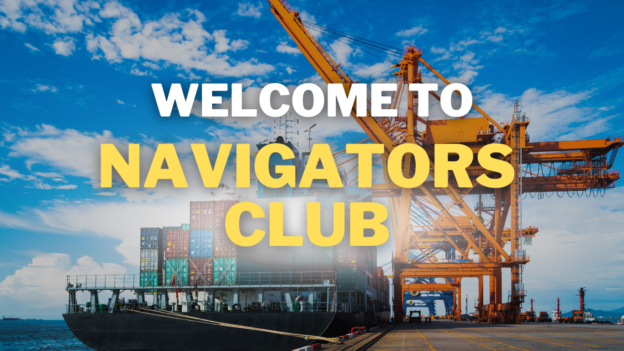
Charting Positive Seas: Our Navigators Club Welcomes You
June 20, 2024 in Life at Sea
===INTO:
Welcome aboard the Navigators Club, a community of enthusiasts bound by their love for exploration and self-discovery. Whether you’re a seasoned explorer or a budding enthusiast, our club promises an enriching journey that spans the vast oceans of knowledge and adventure. As we set our compass toward uncharted territories, we invite you to join our ranks and experience the thrill and enlightenment of this unique expedition.
Setting Sail on a Journey of Discovery
Embarking on a journey with the Navigators Club is not just about charting a physical course across the globe—it’s a metaphorical voyage into the depths of your own potential. Each expedition is crafted to challenge our members in mind and spirit, encouraging growth, resilience, and a deeper understanding of the world around us. From the icy waters of the Arctic to the lush landscapes of the Amazon, our journeys are gateways to learning about diverse cultures, histories, and ecosystems, making every trip a chapter in a larger story of personal and collective enlightenment.
Our members come from various backgrounds, bringing with them unique perspectives that enrich our voyages. Through engaging discussions, guided tours, and collaborative projects, we foster an environment where every member contributes to and benefits from the collective wisdom of the group. This dynamic exchange not only enhances our understanding but also solidifies lifelong bonds among members, who together navigate the perils and discoveries of each new horizon.
Join Our Crew of Visionary Navigators
The heart of our club lies in its members—visionary individuals who dare to dream and explore beyond conventional boundaries. Joining the Navigators Club means becoming part of a community that values curiosity, courage, and camaraderie. We are continually on the lookout for those who are not just seeking adventures but are also willing to lead and inspire others. Whether you are an artist, scientist, educator, or dreamer, there is a place for you here among like-minded pioneers.
Membership in the Navigators Club opens up a plethora of opportunities for personal and professional growth. Our programs are designed to not only traverse physical landscapes but also to navigate the complexities of our modern world. From leadership seminars to conservation projects in remote ecosystems, we provide a platform for members to hone their skills, share their knowledge, and make a tangible impact on the world. As a member, you will find yourself at the helm of exciting projects and pivotal movements, all the while charting a course toward a more enlightened and adventurous self.
The Navigators Club is more than just an organization; it’s a movement. A collective journey that transcends geographical and personal boundaries, fostering a community of empowered individuals who are ready to lead and inspire. If you have a thirst for adventure and a desire to make a difference, we warmly invite you to set sail with us. Discover the unknown, inspire change, and write your own story of adventure and success with the Navigators Club. Join us on this remarkable voyage, and let us chart positive seas together.
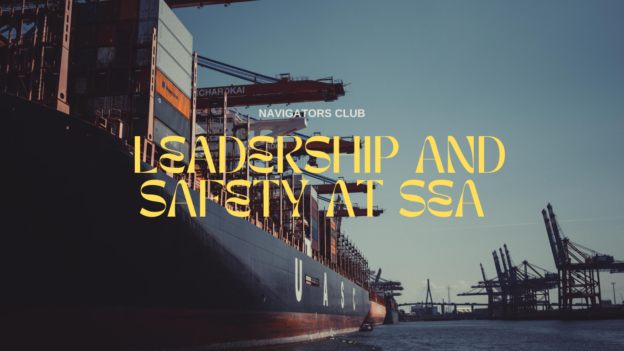
Steering the Ship: Navigating Leadership and Safety at Sea
June 19, 2024 in Life at Sea
Navigating the vast and often unpredictable waters of the ocean requires more than just skill and experience; it demands robust leadership and a steadfast commitment to safety. Both seasoned captains and those newly at the helm can appreciate the profound responsibility that comes with leading a crew and managing a vessel. In the dynamic environments of maritime operations, effective leadership is not just about guiding a ship through the waters but ensuring that every journey is as safe as possible. This article explores the essential strategies for steering the ship with both visionary leadership and unyielding attention to safety.
Charting the Course: Leading with Vision and Vigor
Leadership at sea starts with a clear vision. A ship’s captain must not only navigate the physical challenges of the ocean but also inspire and motivate a diverse crew. Establishing a shared vision is crucial for cohesive effort and effective teamwork. A visionary leader articulates a clear direction and sets achievable, yet challenging goals that propel the whole team forward. This vision keeps the crew aligned and focused, especially during rough seas or when the ship is steering through uncharted waters.
Moreover, a leader’s vigor is reflected in their ability to make decisive and strategic decisions. Vigor comes from a deep understanding of maritime environments and the dynamics of ship management. It is about possessing the energy and passion to tackle problems head-on and push through adversity. Leaders who exhibit vigor are not deterred by setbacks; instead, they use these challenges as opportunities to forge resilience and adaptability within their teams.
Effective maritime leadership also involves fostering a culture of continuous learning and improvement. A good leader at sea is always ahead of the curve, staying updated with the latest navigational techniques and safety protocols. They encourage their crew to pursue training and certifications, ensuring that everyone on board is proficient and prepared to handle any situation that may arise. This commitment to professional development not only enhances individual skills but also elevates the overall capability of the ship’s crew.
Anchoring Safety: Guiding Principles for Protection
Safety is the cornerstone of successful maritime operations. An effective leader prioritizes the well-being of their crew above all else. This commitment to safety starts with rigorous adherence to international maritime safety laws and regulations. By setting a standard of compliance, leaders protect not only their crew and cargo but also the marine environment. It is their duty to instill a safety-first mindset throughout the organization, ensuring that each member understands their role in maintaining a secure vessel.
Leaders at sea also play a critical role in establishing and enforcing robust safety protocols. This includes regular drills, comprehensive risk assessments, and continuous monitoring of safety equipment. By making safety routines second nature, leaders ensure that the crew is always prepared for emergency situations, thereby reducing panic and enhancing coordinated efforts during critical times. Investing in high-quality safety equipment and keeping it well-maintained is another reflection of a leader’s dedication to protecting their team.
Furthermore, a true safety-oriented leader cultivates a culture of openness and communication. They encourage crew members to speak up about safety concerns and suggestions for improvement. This open dialogue not only helps identify potential hazards before they escalate but also promotes a sense of community and mutual respect onboard. By valuing each crew member’s input, leaders reinforce the importance of teamwork and collective responsibility in creating a safe working environment.
Steering a ship through the myriad challenges of the sea is no small feat, and doing so with a vision and a commitment to safety requires a special kind of leadership. Leaders who approach their roles with vigor and dedication inspire their crews and instill in them the values necessary for both personal and professional growth. By charting a clear course and anchoring safety in every aspect of their leadership, these captains ensure not only the success of their voyages but also the well-being of their crew. Let us remember, the strength of a ship lies as much in the integrity of its leader as in the resilience of its hull.
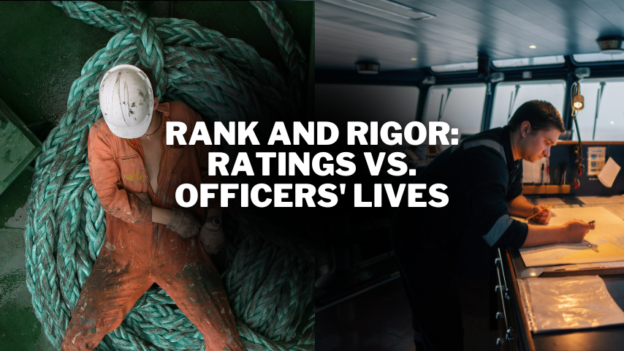
Rank and Rigor at Sea: Ratings vs. Officers’ Lives
June 18, 2024 in Life at Sea
In the hierarchical world of maritime professions, the distinction between ratings and officers is not merely one of rank, but also of lifestyle, responsibilities, and privileges. The division transcends the uniform, reflecting deeper issues of authority, accountability, and the operational dynamics aboard a vessel. Examining the day-to-day realities of these roles provides critical insights into the naval and merchant marine sectors, shedding light on the challenges and rigors faced by seafarers depending on their rank.
The Stark Divide: Ratings vs. Officers
The differentiation between ratings and officers aboard a ship is pronounced, impacting nearly every aspect of life at sea. Ratings, who perform the hands-on tasks, often work under strenuous conditions with less autonomy, facing long hours and physically demanding duties that are crucial for the smooth operation of the ship. In contrast, officers hold managerial positions, tasked with navigation, strategizing, and overall ship management. This divide is not just about workload but also extends to living conditions, where officers generally benefit from more spacious and private accommodations, underscoring a built-in disparity between the two classes.
Officers are not only afforded better living conditions but also enjoy higher status and authority onboard. This distinction in authority can lead to a perceptible gap in mutual understanding and respect between the two groups. The officers’ decisions directly affect the ratings, yet they might not fully grasp the physical and mental toll of the tasks they oversee. This scenario often breeds resentment and can affect crew cohesion, which is essential for the safety and efficiency of ship operations.
The disparity extends into career progression and educational opportunities. Officers usually have higher educational qualifications and receive more training opportunities, which are critical for career advancement in maritime operations. Ratings, on the other hand, while they can rise through the ranks, often face more significant hurdles in achieving officer status. This systemic barrier perpetuates the divide, making it difficult for ratings to transition into roles that offer more authority and better conditions.
Authority and Accountability at Sea
Authority at sea is clearly delineated, with officers holding substantial control over ship operations and the welfare of the crew. This structured chain of command is essential for maintaining discipline and order on board. Officers are trained to handle complex navigational and operational decisions, making them pivotal to the safety and success of maritime missions. However, with great power comes great responsibility, and officers are consequently held to higher standards of accountability. Any error in judgment or failure in leadership can have dire consequences, both legally and operationally.
Accountability mechanisms are in place to ensure that officers uphold their duties ethically and efficiently. However, the ratings, who execute the bulk of the physical work, often lack the authority to challenge decisions or provide input that could enhance operational safety and efficiency. This can lead to a disconnect where valuable ground-level insights are overlooked, potentially compromising the vessel’s operations and the crew’s safety. It is crucial for the maritime industry to foster a culture where the voices of ratings are heard and considered in the decision-making process.
The accountability of ratings, on the other hand, is more direct and often harsher. They are responsible for executing orders and maintaining the vessel, with little room for error. Failure to perform tasks correctly can lead to immediate disciplinary actions. Unlike officers, who may have more opportunities to defend their actions, ratings typically face quicker repercussions, emphasizing an imbalance in the justice meted out at sea. This striking contrast in how accountability is enforced underscores the need for a more equitable approach in managing maritime personnel.
The divide between ratings and officers at sea is a complex layer of maritime operation that goes beyond mere job functions to influence the broader aspects of life and work on a ship. While the hierarchical structure is necessary for maintaining order and safety, it also fosters disparities in authority, living conditions, and career advancement opportunities. Addressing these issues requires a comprehensive reevaluation of maritime policies to ensure a more balanced and fair working environment for all seafarers. Bridging this gap is essential not only for improving the lives of maritime personnel but also for enhancing the overall efficacy and safety of maritime operations.



